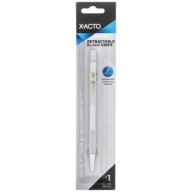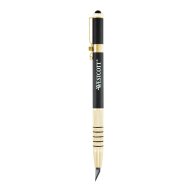Piece of cardboard from the box the drumhead came in.
I put the drumhead face-down on the cardboard.
I measure and center an old CD right in the middle of the head.
The small hole in the CD is taped to the middle of the head.
Slowly, and carefully, I trace around the CD a few times with a fresh razor blade rather lightly.
I hold on to the cd while cutting with the other.
I keep the blade straight up and down while cutting.
I get a nice, round hole every time. However, any slightly rough spots along the edge of the head can be sanded slightly and carefully with a small piece of fine sandpaper.
The largest hole I've ever had in the middle was about the size of a 45 record. Remember those?
My method is tedious, but it works.
I gave the Aquarian Regulators a try but I just don't like off-center ports.
The sound of the drum is still full with a sharper attack, and, yes, the front head still vibrates.
Evans black Hydraulic batters tuned to 90hz (TuneBot)
Remo Ebony Ambassadors ported resos tuned to 80hz
Bed pillow touches both heads
2 18x22 Ludwig Maples









